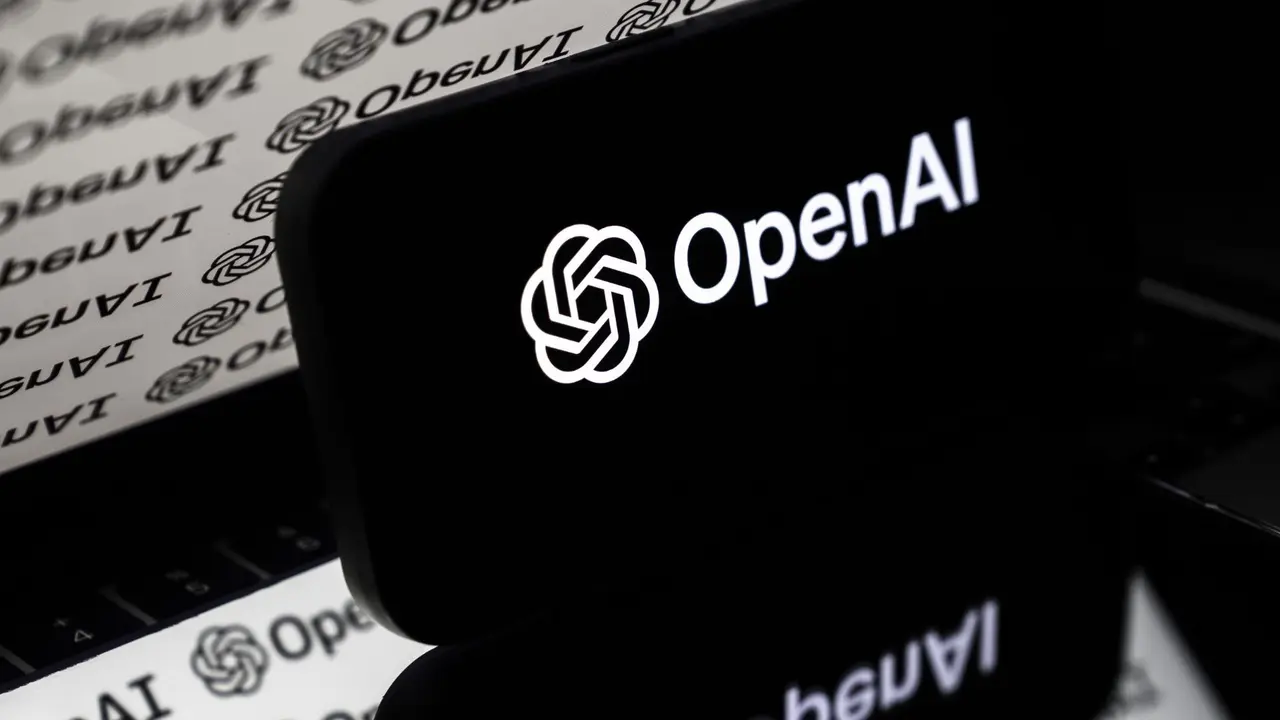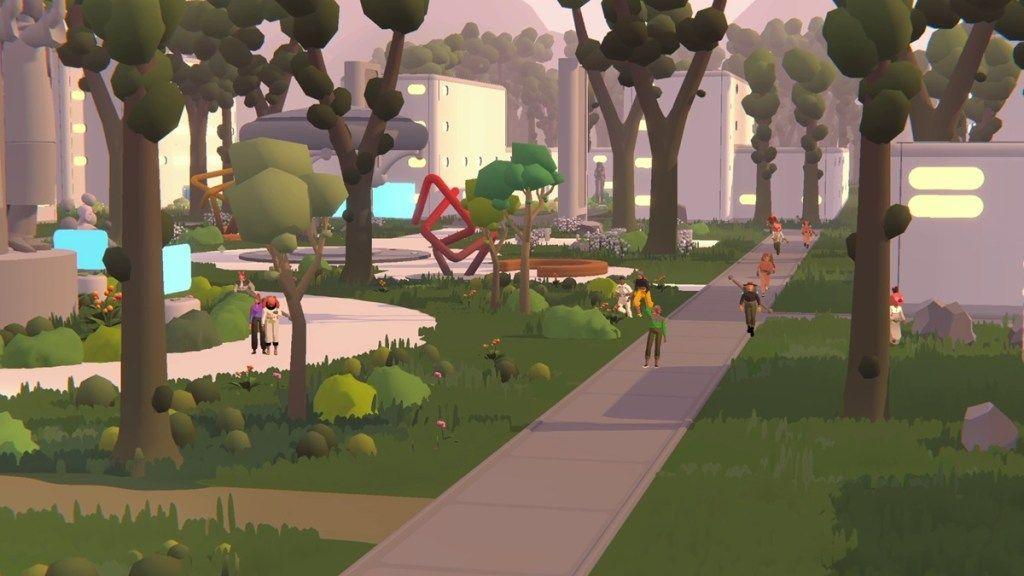Epic Games Unveils The State of Unreal 2025: AI-Powered Tools and Next-Gen Game Development
2 Sources
2 Sources
[1]
Epic Games reveals The State of Unreal for 2025
Epic Games unveiled a stunning tech demo with CD Projekt Red, the maker of the Witcher series, as it showed off the tech behind The Witcher 4 on Unreal Engine 5.6. This post will give a taste of the event but our freelance writer Giancarlo Valdes is on the ground in Orlando. He'll file dispatches with more details and hands-on impressions. And yep, Epic is doing this reveal in the shadow of Disneyworld, as it skipped its traditional State of Unreal at the Game Developers Conference in March. Epic also showed off AI creator tools for its MetaHuman platform for creating human avatars with realistic faces as well as Unreal Editor for Fortnite (UEFN), which is the haven for user-generated content. UEFN has generated $722 million in revenue paid out to third-party creators to date in the past couple of years. And the Epic Games Store has now paid developer and publisher partners over $2.1 billion since launch. The State of Unreal just ended, and the audience got a glimpse of the cutting-edge technologies that Epic Games is testing and releasing to help devs and creators build awesome experiences. The show kicked off with a technical demo from CD Projekt Red -- not The Witcher 4 itself, but a showcase of some of the tech powering the new Witcher saga. Epic also revealed the latest on Unreal Engine 5.6, including major performance upgrades to empower teams to build large-scale open worlds that, just like this tech demo, run smoothly on current-gen hardware. The Witcher 4 Unreal Engine 5 tech demo When Epic launched Unreal Engine 5 three years ago, CD Projekt Red said it would collaborate with Epic to bring large open-world support to the engine. Together at the State of Unreal, now they revealed what they've been working on. The Witcher 4 Unreal Engine 5 Tech Demo follows witcher Ciri, a professional monster slayer, as she explores the never-before-seen region of Kovir in the midst of a monster contract. The tech demo provides an early look at a number of 5.6's powerful new open-world features in action -- all running on PlayStation 5 at 60 frames per second with raytracing -- including the new, faster way to load open worlds via the Fast Geometry Streaming Plugin. As Ciri explores the bustling market of Valdrest, Epic sees how 5.6 handles busy scenes full of high-fidelity characters and visual effects like ML Deformer. The tech demo also showcases Nanite Foliage -- which provides a fast and memory efficient way to achieve gorgeous foliage density and fidelity, slated for release in UE 5.7. UE 5.6: open world magic and engine-first animation Unreal Engine 5.6 is now available for download! With this release, one of the key goals was to empower devs to build super-high-fidelity, large-scale open worlds that run smoothly at 60 frames per second on current-generation consoles, high-end PCs, and modern mobile devices. Beyond open world features, Epic made major strides toward a truly engine-first animation and rigging workflow, eliminating the need for DCC round-tripping. Epic also added the ability for devs to author MetaHumans directly within the engine, unlocking a more streamlined and efficient creative process. MetaHuman 5.6: the most powerful digital human toolset yet With MetaHuman 5.6, the digital human framework leaves Early Access and is now fully embedded in Unreal Engine. Epic updated the Unreal Engine EULA so MetaHuman characters and animation can be used in any engine, such as Unity or Godot, as well as creative software like Maya, Houdini, and Blender so you can expect to see MetaHumans in more places. MetaHuman Creator now has enhanced fidelity thanks to improved materials, a larger scan database and improved models for processing scan data, plus new authoring workflows that will vastly expand the range of available options for faces, bodies, and clothing. The update also provides the ability to generate real-time animation from almost any camera or audio with MetaHuman Animator, and expands the MetaHuman ecosystem with new plugins for DCCs, as well as integration with the Fab marketplace. Unreal Editor for Fortnite: New IP, AI-powered developer assistant Since Epic launched UEFN just over two years ago, players have spent over 11.2 billion hours across 260,000 live creator-made islands, which has resulted in $722 million paid out to third-party creators. Epic continue to expand the tools and the IP that are available to creators, and starting June 17 creators will be able to build LEGO experiences brick-by-brick using the LEGO Brick Editor. Exciting new IPs are also coming to UEFN with Squid Game slated for June 27, followed by Avatar: The Last Airbender and Star Wars IP. Speaking of Star Wars, during the latest Season of Fortnite Battle Royale: Galactic Battle, Epic introduced a Darth Vader NPC that uses conversational AI to respond when players speak to him. Epic is taking what it learned and is sharing the underlying technology with the creator community. Later this year, the company is releasing new tools for creators to build their own engaging AI-powered NPCs in UEFN. As demonstrated onstage at the State of Unreal, creators will be able to use the new Persona Device to create characters with personalities that players can talk to. And Epic is taking it a step further so creators can not only drive NPC behavior and dialog, but also drive the core game itself. Another AI tool that will help creators is the new Epic Developer Assistant, which is now available in beta on the Epic Developer Community. Epic built this AI-powered assistant to help you write Verse code that devs can use in UEFN projects. It also provides answers, workflow guidance, snippets, and speeds up the Fortnite island development process. Finally, the Scene Graph beta launches on June 7. Scene Graph is a new foundational layer for UEFN that unifies editor and runtime views, making all scene elements accessible through Verse. In the editor, it organizes entities hierarchically for fast, flexible world-building -- turning repeated items into prefabs for easier management. At runtime, Verse code can modify the scene dynamically, from moving platforms to changing properties on lights. Scene Graph is engineered from the ground up to power the future of UEFN. Devs can explore all the new updates and improvements coming to UEFN in a blog post. Across the Epic ecosystem RealityScan 2.0 is launching in the coming weeks, which will unify the desktop and mobile versions under the 'RealityScan' name. RealityScan 2.0 is packed with new features like AI-powered masking, smarter image alignment, and support for airborne laser scans. CD Projekt Red used RealityScan to capture natural objects in high fidelity for The Witcher 4 Unreal Engine 5 Tech Demo. Epic also announced that Fab will be available in the Epic Games launcher this summer, making it easier for developers to get Fab content and integrate it into their workflows. Loci joined Epic recently and Epic will integrate its AI technologies into Fab in the coming months to enable automated asset tagging, semantic search, and improved IP moderation. Updates coming to the Epic Games Store The Epic Games Store has now paid developer and publisher partners over $2.1 billion since launch. On mobile, EGS now has a library of 70 awesome games and 40 million installs to date, and it's on track to hit 70 million by the end of 2025. To give publishers an even better deal, Epic just changed its initial revenue share to 0% for the first $1 million then 12% thereafter. Netmarble announced that Mongil: Star Dive is coming exclusively to the Epic Games Store on PC in October 2025 as part of the Epic First Run program. The title will soon be coming to mobile as well, so keep an eye out for it on the mobile version of the Epic Games Store. Pre-loading is launching in September and gifting is coming in time for the holidays, so devs can gift games to friends on PC and mobile. Epic is also opening the Epic Games Store's self publishing to developers and publishers on Android and iOS in Q3 2025. Epic Web Shops are coming in July, giving developers an easy way to set up a shop for PC and mobile games' in-app purchases. Epic Web Shops will enable partners to benefit from industry-leading revenue terms, and pass on added value to players with bonus offers and Epic Rewards. And last but not least, Epic's revamped social features will connect its PC and mobile players together with game independent voice chat, text chat, and parties, along with robust game invites for third-party games. This will be the building block for several innovative social features on the Store that will follow.
[2]
Everything I saw at State of Unreal 2025: why the future of game design just shifted
The Witcher 4 teases what's next for Unreal Engine and AI tools offer a new way to create. Every year, the State of Unreal manages to surprise but perhaps not since the reveal of Unreal Engine 5 back in 2020 has it mattered this much - in 2025 Epic Games didn't just deliver, it reshaped the landscape. I'm lucky enough to be sat in the crowd and see it happen at this year's Unreal Fest. As I sit watching the keynote stream, notepad in hand, it quickly became clear this wasn't just about new tech. It was about changing how games and digital experiences are and will be made, who gets to make them, and what's even possible in real-time 3D. Let me break down the biggest news from. Let's get this out of the way: no, this isn't The Witcher 4. But honestly, I don't care because what CD Projekt Red and Epic showed off was breathtaking. The tech demo stars Ciri, set in a luscious and lifelike, never-before-seen part of the Continent - the snowy, richly atmospheric region of Kovir. What's really jaw-dropping is how seamlessly the demo runs on a PS5: 60fps, raytracing turned on, dense environments buzzing with life. The highlight has to be Unreal Engine 5.6's Fast Geometry Streaming Plugin, which keeps open worlds snappy without sacrificing fidelity. Combine that with the new Nanite Foliage (arriving in UE 5.7), ML Deformer, and the kind of cinematic detail we used to dream about, and suddenly I'm not just watching a demo, but peeking into the next generation of interactive storytelling. This demo also showcased the latest photogrammetry tech: RealityScan 2.0 is just around the corner. It unifies desktop and mobile workflows and adds powerful features such as AI-powered masking, smarter alignment and even airborne laser scan support. CD Projekt Red used it for its The Witcher demo. Unreal Engine 5.6 is out in the now - you can download it for yourself - and it's a beast. The headline here is performance. Open-world support has been supercharged to the point where massive, detailed landscapes don't just work on current-gen consoles but they do so in a way that has eased many of the gripes some have had with UE5. What really caught my eye was the Unreal Engine-first animation and rigging. Forget round-tripping to your DCC tools, now you can do the heavy lifting right inside Unreal. Add in native MetaHuman authoring, and you're suddenly working in a pipeline that feels frictionless, immediate, and artist-first. This has not always been the case, but read the official blog for a full rundown. This was one of those 'finally!' moments from the show. MetaHuman is officially out of Early Access and now fully baked into the engine and it's more versatile than ever. You can now build, animate, and deploy MetaHumans not just in Unreal Engine 5.6, but in Unity, Godot, Maya, Houdini, Blender... you name it, the best 3D modelling software and the best game development software will be supporting MetaHuman. The improved fidelity is stunning, especially when paired with MetaHuman Animator, which can now generate real-time animation from almost any camera or even audio input - I saw this in action the night before the keynote, and it's impressive (and fun). New Digital Content Creator plugins and Fab integration round out what feels like the most powerful digital human toolkit we've ever had. If you haven't been paying attention to Unreal Editor for Fortnite (UEFN), now's the time to tune in. In just over two years, it's become a juggernaut, with creators clocking 11.2 billion hours across hundreds of thousands of islands, and over $722 million paid out. What started out as a bit of fun, a gateway to game development has become big business. This summer, UEFN levels up again. Starting 17 June, you'll be able to build LEGO experiences brick-by-brick using a dedicated LEGO Brick Editor. The IP hook-ups keep coming, with Squid Game arriving 27 June, followed by Avatar: The Last Airbender and Star Wars. Speaking of a galaxy far, far away, the Vader NPC in Fortnite: Galactic Battle can now talk back using conversational AI, which is both creepy and impressive. Later this year, you'll be able to build your own AI-powered characters using the Persona Device - watch it on the State of Unreal YouTube channel. On The implications are massive and something we've I've tried before with the Nvidia AI NPC; but an AI that drives not just NPC dialog, but entire gameplay logic is, well... game-changing. Combine this with the new Epic Developer Assistant (which writes Verse code with you in real time) and the upcoming Scene Graph (launching 7 June), and UEFN isn't just a level editor anymore. It's a full-blown game engine, now powered by AI. The State of Unreal 2025 didn't just drop new features, it unveiled an entire vision, and the crowd's reaction here in Orlando suggests this has been a popular move. Sure, The Witcher 4 tech demo stole the show and points to a vision where open-world dev doesn't require trade-offs, but the news of improved digital human modelling and animation, AI that doesn't just support creators but empowers them, feels like a line in the sand we're just stepping over. If you're building the future of games, film, architecture, or anything in between it's hard to ignore where the tools are headed. Right now, they're all pointing squarely in Unreal's direction.
Share
Share
Copy Link
Epic Games showcases groundbreaking AI-powered tools and next-generation game development features at The State of Unreal 2025, including advancements in Unreal Engine 5, MetaHuman, and AI-driven content creation for Fortnite.
Epic Games Unveils The State of Unreal 2025
Epic Games has unveiled its highly anticipated State of Unreal 2025, showcasing groundbreaking advancements in game development technology and AI-powered tools. The event, held in Orlando, Florida, featured a series of announcements that are set to reshape the landscape of real-time 3D creation
1
2
.
Source: Creative Bloq
The Witcher 4 Tech Demo: A Glimpse into the Future
One of the highlights of the event was a stunning tech demo for The Witcher 4, developed in collaboration with CD Projekt Red. While not representative of the final game, the demo showcased the capabilities of Unreal Engine 5.6, running at 60 frames per second with raytracing on PlayStation 5
1
2
.The demo featured Ciri, a professional monster slayer, exploring the new region of Kovir. It demonstrated several new open-world features, including:
- Fast Geometry Streaming Plugin for faster open-world loading
- ML Deformer for high-fidelity character animations
- Nanite Foliage for efficient and dense vegetation rendering
Unreal Engine 5.6: Empowering Open-World Development
Unreal Engine 5.6, now available for download, focuses on performance improvements for large-scale open worlds. Key features include
1
2
:- Enhanced open-world support for current-gen consoles and high-end PCs
- Engine-first animation and rigging workflow
- Native MetaHuman authoring within the engine
MetaHuman 5.0: Advanced Digital Human Creation
MetaHuman, Epic's digital human framework, has exited Early Access and is now fully integrated into Unreal Engine. Notable improvements include
1
2
:- Cross-engine compatibility (Unity, Godot, Maya, Houdini, Blender)
- Enhanced fidelity with improved materials and larger scan database
- MetaHuman Animator for real-time animation from camera or audio input
- New plugins for various digital content creation software
Unreal Editor for Fortnite: AI-Powered Game Development
Epic Games is expanding the capabilities of Unreal Editor for Fortnite (UEFN), which has already generated $722 million in payouts to third-party creators. New features include
1
2
:- LEGO Brick Editor for creating LEGO experiences (available June 17)
- Integration of popular IPs like Squid Game, Avatar: The Last Airbender, and Star Wars
- AI-powered NPCs with conversational abilities
- Persona Device for creating custom AI-driven characters
- Epic Developer Assistant for AI-powered code writing in Verse
Related Stories
RealityScan 2.0: Advanced Photogrammetry
Epic also teased RealityScan 2.0, an upcoming update to their photogrammetry technology. New features will include
2
:- Unified desktop and mobile workflows
- AI-powered masking
- Improved alignment algorithms
- Support for airborne laser scans
Impact on the Game Development Industry
The announcements made at the State of Unreal 2025 signify a major shift in game development practices. By integrating AI-powered tools and streamlining workflows, Epic Games is not only enhancing the capabilities of professional developers but also lowering the barrier of entry for aspiring creators
2
.The advancements in open-world technology, digital human creation, and AI-driven content generation are poised to have a significant impact on the future of interactive entertainment, potentially influencing fields beyond gaming, such as film, architecture, and other real-time 3D applications
2
.References
Summarized by
Navi
[1]
Related Stories
Epic Games Unveils AI-Powered Tools and New IP Integrations for Fortnite's Unreal Editor
04 Jun 2025•Technology

NVIDIA Revolutionizes Cloud Gaming with GeForce NOW RTX 5080 Upgrade
19 Aug 2025•Technology

Upheaval Games Launches AI-Powered Dreamer Portal for Revolutionary 3D Game World Creation
29 Apr 2025•Technology

Recent Highlights
1
AI Chatbots Sway Voters More Effectively Than Traditional Political Ads, New Studies Reveal
Science and Research

2
Trump signs executive order to override state AI laws despite bipartisan pushback
Policy and Regulation

3
OpenAI warns upcoming AI models will likely pose high cybersecurity risk with zero-day exploits
Technology





